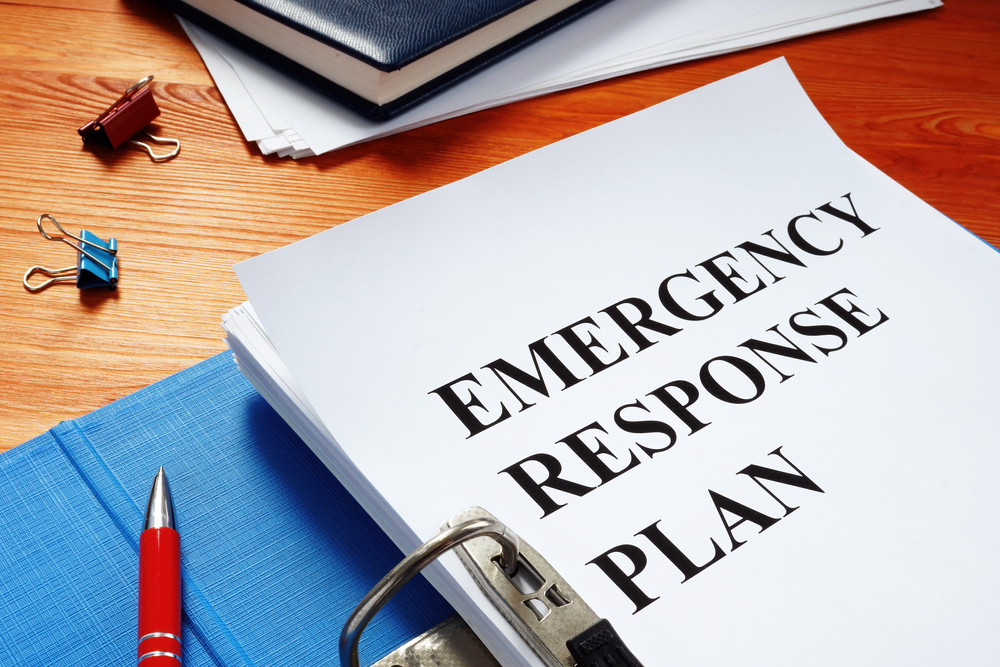Information bottlenecks can be especially problematic for both security and facilities management professionals, who need to work together to respond to emergencies.

During Facilities Management Advisor’s FM Now: Emergency Preparedness virtual summit, guest speaker David Trask, National Director from session sponsor ARC Facilities, gave a presentation on September 26.
The presentation was given during an educational session titled “Facilities & Security Double Down on Emergency Responsiveness: Free the Flow of Information to Improve Building Safety.”
Emergency Types
Trask discussed the importance of emergency management coordination among facilities management and security department personnel, and who controls access to specific types of information should also be determined.
Emergencies they should be prepared to handle, according to Trask, include:
- Workplace violence: This is becoming more commonplace in facilities, especially in healthcare settings. Victims can include visitors and patients.
- Active shooter incidents: There’s a huge uptick in these. It’s important to determine ways to respond and access information when these incidents occur.
- Natural disasters: These can include flooding, hurricanes, tropical storms, and wildfires. Find ways to access information in an emergency and respond.
- Burst water pipes: Determine how to react and the location of water shut-offs. This is also important when it comes to leaky faucets that could create lots of water that would damage expensive equipment.
- Power outages: Determine where the electrical panels and power sources are. Find the location of breakers that need to be tripped to shut the power off in case a circuit needs to be replaced.
- Cyberattacks: These are becoming more frequent across all industries, so ensure you have access to information offline and off-site, such as through the cloud. Don’t rely solely on using a shared drive as a backup.
Documentation
Consider making documentation readily available to facilities professionals, first responders, and vendors so they can conduct annual inspections.
Also ensure the documentation can be easily updated if the facility is renovated or expanded.
“The person who’s been there for 30 years or the person who started last week should be able to access information to do their job and to react and respond quickly when something’s going sideways,” Trask said.
“The more of this information that changes or more of the times that your building has changed, all those renovations mean more documentation,” he noted.
Such documentation should include:
- Photos and videos of rooms;
- Floor plans;
- Life safety measures;
- Mechanical, electrical, and plumbing documents;
- Maintenance logs;
- Utility (water, electrical, power, and gasses) shut-off locations;
- Action plans;
- Equipment locations;
- Building-specific contact information to reach the right individual during an incident; and
- Chemicals in use (especially in scientific laboratories).
Accessibility
Remember that as tenured employees leave, they often take maintenance institutional knowledge with them, which could mean preventive maintenance becomes deferred maintenance due to equipment breakdowns and facility shutdowns.
To prevent this, it’s important to have on-the-go access to maintenance information, which gives security and facilities professionals the ability to access it from their mobile devices from anywhere at any time.
Don’t rely on old paper schematics, which can be difficult to access and possibly obsolete if the facility went through changes after they were printed.
“The absence of instant access to vital information during emergencies increases risk, jeopardizes occupant safety, and disrupts business continuity,” Trask noted.
“Delays in shutting off valves or other equipment can increase building damages, sometimes by hundreds of thousands of millions of dollars,” he said.
Cross-Training
Providing facilities management and security with adequate training to do each other’s jobs allows both departments to be even more effective in providing a safer facility for all occupants.
Trask suggests that facilities and security departments collaborate by implementing the following cross-training measures:
- Building layout familiarization: Train security on building layout, including fire alarm panel and emergency exit locations.
- Preventive maintenance awareness: Facilities can train security staff to spot maintenance issues because security personnel are on-site 24/7.
- Emergency equipment maintenance: Cross-train security personnel to perform routine checks on fire extinguishers and emergency equipment.
- Awareness of security concerns: Make security teams aware of potential threats, including cyberattacks and workplace violence.
- Collaborative meetings: Regular meetings between facilities and security management teams foster communication and coordination.
Learn More
During the session, Trask also discussed challenges in having documents digitized on computers, specific examples of how facilities and security worked together to save loss of life and property, and specifics on how mobile access works in areas with weak Wi-Fi or cellular service.
To watch the entire webinar on demand for FREE, click here.
